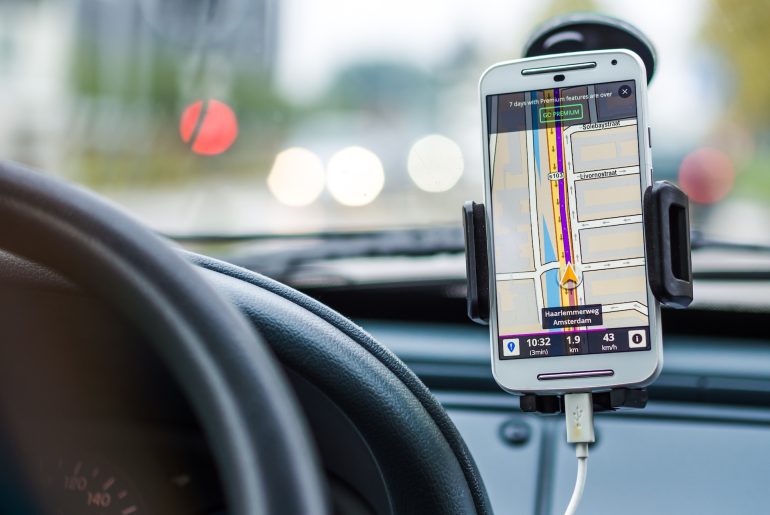This article may contain references to products or services from one or more of our advertisers or partners. We may receive compensation when you click on links to those products or services. Nonetheless, our opinions are our own.
The information presented in this article is accurate to the best of our knowledge at the time of publication. However, information is subject to change, and no guarantees are made about the continued accuracy or completeness of this content after its publication date.

Updated by Albert Fang
Time Spent Dashing
California DoorDash drivers would do well to pay close attention to the Dash Time and Active Time in their apps, as California law, thanks to Proposition 22, applies to them concerning their status as either employees or contract workers. These designations are important when it is time to file taxes. Even for those who do not reside in California, these two distinct times are useful.
So, what is the difference? In the driver’s app, “Dash Time” is the time you spend with the app logged in and “on the clock.” From the moment you log in until the time you log out, this is considered to be “Dash Time.” This applies to time spent waiting for an order as well as picking up and delivering an order. A driver that logs in at 9 am and logs out at 1 pm totals 4 hours of Dash Time. Overall, it is the time spent online and “on duty.”
Active time, however, has stricter requirements. This refers to the time spent actively working on an accepted order. From the moment you accept an order until the moment you mark it fulfilled, this is “active time.” So, for example, a person who logs in at 11 am and spends 10 minutes waiting for an order, 30 minutes delivering it, and then another 20 minutes waiting for a new order before logging out accumulates 60 minutes of Dash Time but only 30 minutes of Active Time.
Why Is It Important?
The DoorDash Active vs Dash Time breakdowns are very important, especially for Dashers who want to make this a full-time job, or for those working in California, a state that requires delivery drivers to make a minimum wage when working, whether they make enough in deliveries or not per hour. Time spent waiting on orders is not productive, as drivers are only earning money when making active deliveries. These two times help drivers track their productive times versus their unproductive times. For the Dasher working only part time and doing the math to see he is making less than the minimum wage overall, the entire process might not be worth it, and perhaps some other job would be more lucrative.
For Dashers in California, Proposition 22 guarantees a certain percentage of the minimum wage (120%) for each hour of active work, that is, time spent delivering but not waiting. For the California Dashers, this means the active time is going to be the most important time. Let us say that a California Dasher earned 2 hours of active time over a 3-hour period. During the active time, the Dasher earned $30. This comes to $15 per active hour. Presently, California’s minimum wage is $14 an hour. As Prop 22 requires payments of 1.2 times the amount of the state minimum wage, the Dasher would have to calculate 2 x (1.2 x $14) = $33.60. Since the amount earned by the Dasher in the active time was $30, less than the required amount by state law, DoorDash would have to pay the Dasher $3.60 to compensate for the difference. This also excludes tips and mileage expenses. In this way, Dashers can use the Active Time to ensure they are being compensated properly.
Voted "Best Overall Budgeting App" by Forbes and WSJ
Monarch Money helps you budget, track spending, set goals, and plan your financial future—all in one app.
Get 50% OFF your first year with code MONARCHVIP
Summary
For California Dashers, we can see how tracking DoorDash Active vs Dash Time can be beneficial, but these features are just as important for Dashers everywhere. Many people start delivering for a third-party delivery service to earn extra income on top of a regular job, and most people would prefer to earn at least the minimum wage for their time spent working. As drivers are responsible for covering their own gas, vehicle maintenance, and other expenses, making less than the minimum wage makes the entire job not worth it overall. Calculating your Dash Time against your Active Time to ensure you are making at least your state’s minimum wage is the best way to determine how lucrative working for DoorDash is for you.
FAQ
1. Do any other states beyond California guarantee a minimum wage for Dashers?
Presently, only California has this requirement at the state level. However, New York City has similar requirements in its own jurisdiction, in which delivery services like DoorDash and GrubHub must establish a minimum payment per trip, eliminate the cost of equipment like hot bags ($50 for a good one), and make tipping policies transparent. Drivers must earn at least $15, the minimum wage in NYC, while working for the delivery service.
2. How can Active Time benefit drivers who must wait for an order at a restaurant?
Because the Active Time starts from the moment an order is accepted, even if a driver has to wait for an order at a restaurant, that time is still counted towards the Active Time.

Reviewed and edited by Albert Fang.
See a typo or want to suggest an edit/revision to the content? Use the contact us form to provide feedback.
At FangWallet, we value editorial integrity and open collaboration in curating quality content for readers to enjoy. Much appreciated for the assist.
Did you like our article and find it insightful? We encourage sharing the article link with family and friends to benefit as well - better yet, sharing on social media. Thank you for the support! 🍉
Article Title: DoorDash Active vs Dash Time App Feature: What is the Difference on the DoorDash App?
https://fangwallet.com/2022/08/21/doordash-active-vs-dash-time-app-feature-what-is-the-difference-on-the-doordash-app/The FangWallet Promise
FangWallet is an editorially independent resource - founded on breaking down challenging financial concepts for anyone to understand since 2014. While we adhere to editorial integrity, note that this post may contain references to products from our partners.
The FangWallet promise is always to have your best interest in mind and be transparent and honest about the financial picture.
Become an Insider

Subscribe to get a free daily budget planner printable to help get your money on track!
Make passive money the right way. No spam.
Editorial Disclaimer: The editorial content on this page is not provided by any of the companies mentioned. The opinions expressed here are the author's alone.
The content of this website is for informational purposes only and does not represent investment advice, or an offer or solicitation to buy or sell any security, investment, or product. Investors are encouraged to do their own due diligence, and, if necessary, consult professional advising before making any investment decisions. Investing involves a high degree of risk, and financial losses may occur including the potential loss of principal.
Source Citation References:
+ Inspo












































